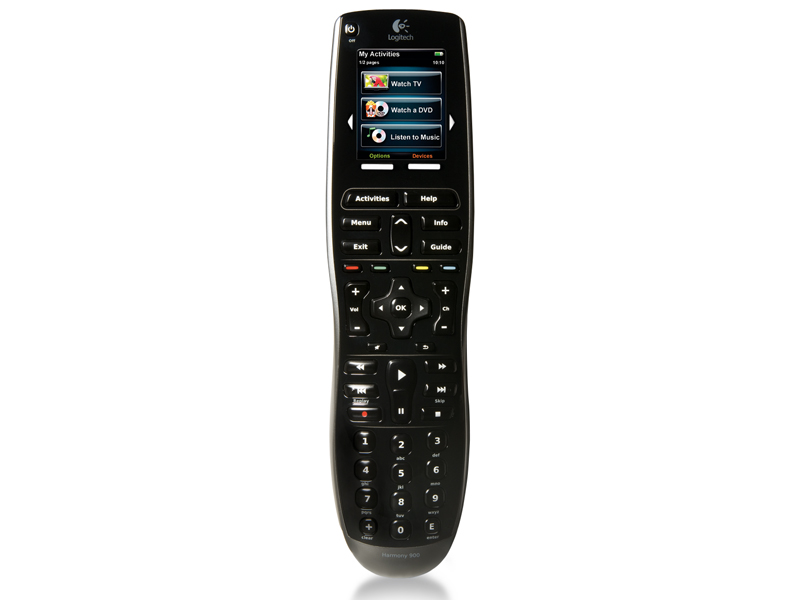TechRadar Verdict
Pros
- +
Attractive design
- +
RF option with 30m range
Cons
- -
Expensive
- -
Most people won't require the RF option
Why you can trust TechRadar
At first glance, the Logitech Harmony 900 looks almost identical to the less expensive Harmony One.
Like the latter it includes a 2.2-inch touchscreen, rechargeable Li-Ion battery and charging cradle, and can control 15 different devices.
The price of buttons
However, a closer look reveals some important differences. The screen on the 900 seems sharper, with a more readable text display, and – far more importantly – it has the red, green, yellow and blue coloured buttons that were mysteriously missing from the Harmony One.
Mind you, the Harmony 900 costs £100 more than its button-free sibling, which works out at £25 per button!
Fortunately, there's one other key feature that sets the Harmony 900 apart from its stablemate and most of its other rivals, too. The Harmony 900 includes both IR and RF transmitters, along with a set of three 'blasters' for relaying signals to your equipment.
The blasters have a range of up to 30m, and don't require line-of-sight reception, so they can be used to control set-top boxes and other equipment that might be neatly stored behind the door of a storage cabinet.
In other respects the 900 is a conventional universal remote control. It uses the same configuration software as the Harmony One, so I was easily able to configure it to use all my home entertainment kit – even including the fiddly FetchTV box.
Of course, most people won't care about the RF option, but the Harmony 900 may well appeal to 'neat freaks', who like to stash all their kit away in tasteful mahogany cabinets from Habitat.
Follow TechRadar Reviews on Twitter: http://twitter.com/techradarreview
Cliff Joseph is a former Editor of MacUser magazine, and a freelance technology writer with 30 year’s experience in the industry (and old enough to remember when Apple was close to going bust…).
His first job involved using Macs for magazine sub-editing and typesetting, which led to the realisation that these computer-thingies might actually turn out to be useful after all. After a few years specialising in the Mac side of the market, he went freelance and embraced the wide world of digital technology, including Windows PCs, digital audio and hi-fi, and networking. Somewhere along the line he also developed a bit of a gaming habit and has stubbornly waved the flag for Mac gaming for far too many years.
